#reenactment clothing
Explore tagged Tumblr posts
Text


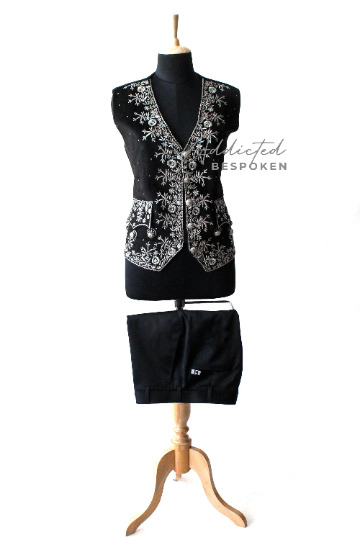



Men Black Velvet 3Pc Fersen Court Suit Historical Period Reenactment Clothing 18th Century Metallic Embroidered Free Lace Jabot And Cuffs
This 18th Century vintage costume for men is inspired from the magical Venical Carnival & Late Baroque fashion. The costume can become the zest of any carnival or themed festival and can also be a perfect costume for wedding groom.
This 3Pc court suit include: •Black velvet justaucorps embellished with floral embroidery & metal button detailing •Black velvet Vest embellished with floral embroidery & have button closure •Black cotton pant •Laced jabots & cuffs
Features: •Intricate embroidered •Lightweight •Soft & Breathable •Comfortable wearing in all seasons
Material & Caring: •Premium Velvet & Eco friendly material •Dry Clean •Dry on low heat or hang to dry for best result
#renaissance costumes#theatrical costume#venetian costumes#masquerade costumes#men period clothing#victorian clothing#historical costume#period costumes#1800s clothing#reenactment clothing#1800s reproduction#carnival costume men#Fersen Court Suit
9 notes
·
View notes
Text




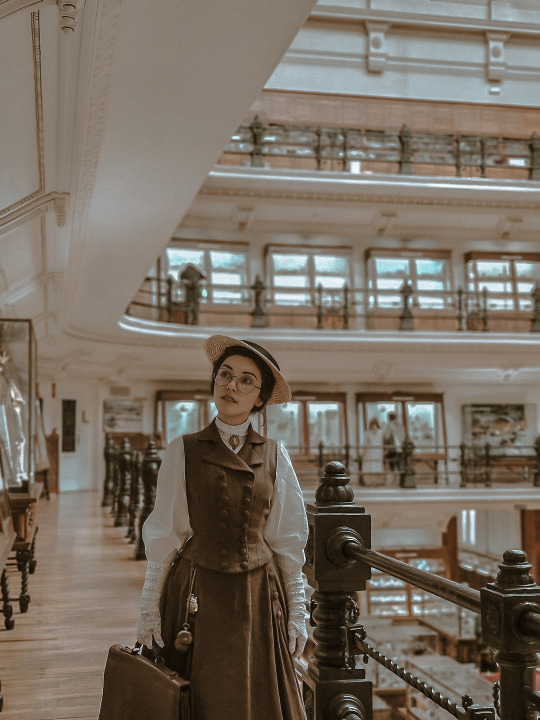

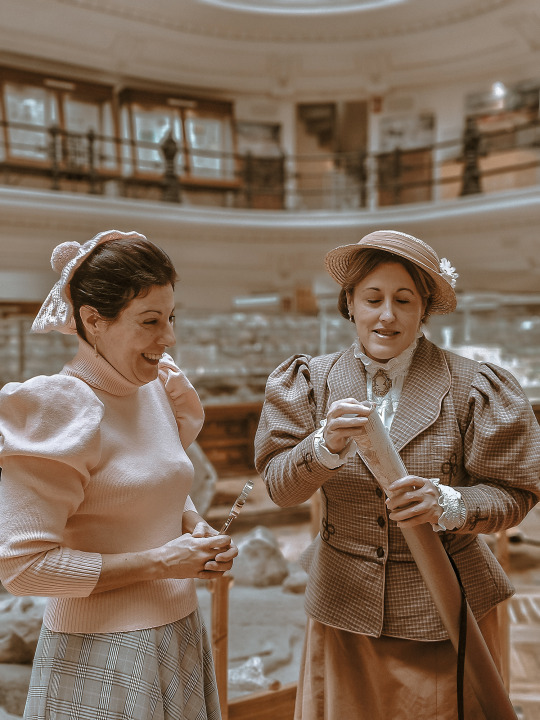

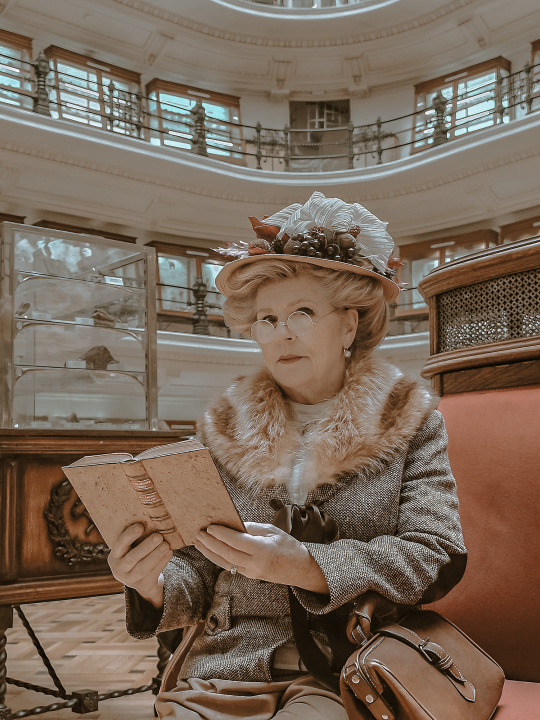


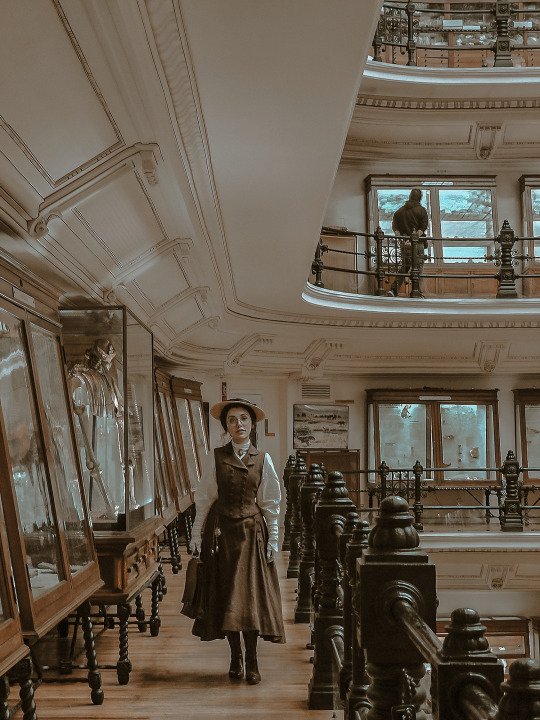



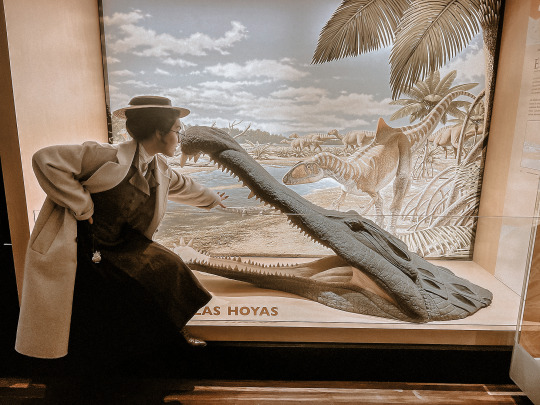







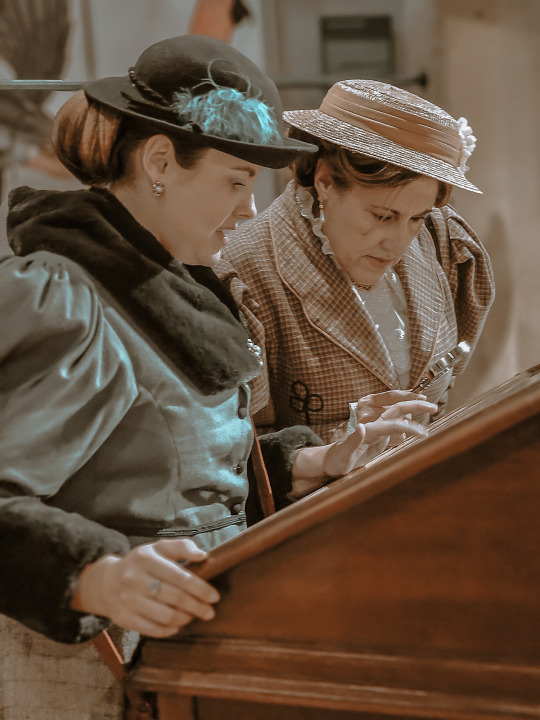



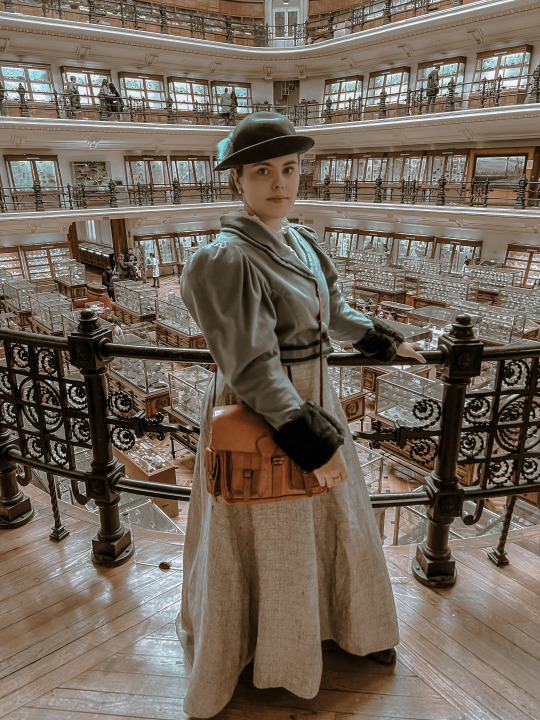
Some photos of 1900 historical reenactment we did at the Geomineral and Natural sciences museums for the International day of women in science 😊
#nips photos#historical reenactment#historical fashion#edwardian#photography#museums#personal#yes I own that waistcoat and skirt combo in three colors I love them!!#I gained 6kg since the last reenactment I can barely fit into my edwardian clothes help I can't afford new ones lmao 😩#next reenactment is set in the 20's!! I'm excited 🥰#nips blogs
510 notes
·
View notes
Text
Being a man is either getting tempted by ads for old WWII motorcycles and going to old pubs with the lads or being a little angel who whines at the door with big doe eyes in a delicious looking little outfit waiting for your partner to get home and the catch is they’re actually the same man and it’s Me
#like I do historical military reenactment and give equipment and rifle demos#but I also take cute photos in tiny outfits or take my clothes off in front of audiences :)#my debut show was a twink American GI where I stripped behind an American flag#when worlds collide I guess#and I love that my reenactment group was like Hell Yeah#god I never remember my text tag#oh well#me
92 notes
·
View notes
Text

“As per my last correspondence-”
#medieval reenactment#medievalcore#14th century#history#medieval#medieval history#historical reenactment#costuming#aesthetic#sca#medieval aesthetic#medieval clothing#fashion#historical fashion#fantasy#fantasy aesthetic#medieval fantasy#i’ll be on my merry way now
197 notes
·
View notes
Text

Barry's Photography, Château Gaillard 2019
54 notes
·
View notes
Text
Flesh in the fruit and blood in the wine
I don't want anything if the whole world isn't mine

I can't believe it's finally finished! After 8 months of work I am glad to present you, ladies and gentleman my 17th century men's costume. It's made out of satin and trimmed with lace, which was sewn on by hand. The wig was also styled by me.
#17th century#historical reenactment#historical costuming#historical sewing#17th century fashion#historical fashion#versailles#1600s#baroque#baroque fashion#fashion history#historic fashion#histoire#louis xiv fashion#louis xiv#le roi soleil#sun king#hand sewing#historical costume#historical clothing#costume design#costume
52 notes
·
View notes
Text

A War of 1812 reenactor at Fort Meigs showing the amount of soot generated by only a few shots of his musket (the poor man also had soot on his face).
Even if they don't fire real bullets (for obvious safety reasons), I appreciate the fact that the fort’s reenactment group uses real flints for their locks!
#war of 1812#living history#fort meigs#us army#military history#flintlock#firearms#black powder#unfortunately the sharpest picture has the most ruffled-looking clothes on the reenactor#nice peek at his shirt tho#historical reenactment#1810s#napoleonic#dressed to kill
55 notes
·
View notes
Text




Pennsic Day 5- they had a gothic cathedral 🏰
behind the scenes: me doing some sewing for a vendor in their trailer and more photos of the cathedral in camp!




#medieval clothing#medieval reenactment#society for creative anachronism#fourteenth century#historical costuming#mine#going through my pics and I realized I never posted anything from Pennsic#also the dresses are all handmade by me and the skirt hikes were made by a friend!
27 notes
·
View notes
Text

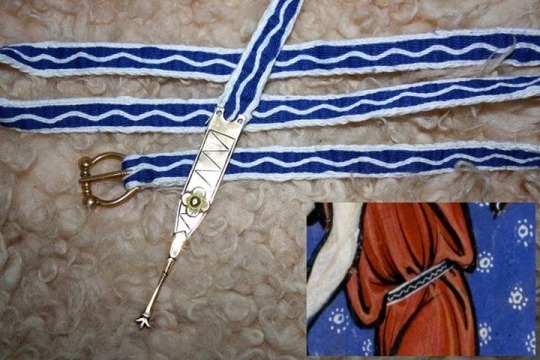
13th century tablet woven belt
#15th century#13th century#medieval#tablet weaving#loom weaving#belt#christianity#reenactment#living history#medieval clothing#reenactor#manuscript
300 notes
·
View notes
Text
In this moment I wish I actually learned to use a sewing machine. It's been pretty much a week and I'm still working on this stay and I think I've went insane. Not even done the eyelets yet either. Am I the only idiotic reenactor that hand sews everything, like everything?

#reenactment#reenactor#17th century#historical fashion#historical clothing#undergarments#hand sewing#handmade
21 notes
·
View notes
Text
I feel like I need to get more into regency clothing
#it’s not that I’m Not into regency clothing it’s just not my main period#and generally if I’m going to spend money on historical clothing it will be for reenactment stuff#but the thing is regency clothing is objectively more popular and accessible (comparatively)#I mean the truth is that quality historical clothing is almost always handmade and therefore always more expensive#but there’s comparatively More people into regency fashion than late 18th century so there are more options#also this is an observation only I would make but regency clothing is like marginally more socially acceptable to wear in public#idk. I think in general it’s perceived as more ‘fashionable’ than georgian clothing because it appeals more to a modern eye#so while it’s not common it’s comparatively Less Weird idk#sort of makes me sad but I also agree that it is a very universally appealing fashion period#at least in terms of menswear I’m not much of a fan of regency womenswear past the 1790s#but idk I feel like. I want to dress in ways that make me feel happy and confident in my everyday life#and while I’m not Unhappy yeah it is still sort of a dream of mine to effectively have a ‘historybounding wardrobe’#and I feel like regency fashion is the gateway#maybe I’ll make some moves toward that this year#mine
15 notes
·
View notes
Text
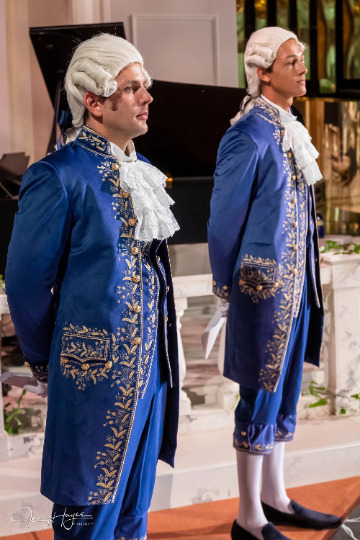
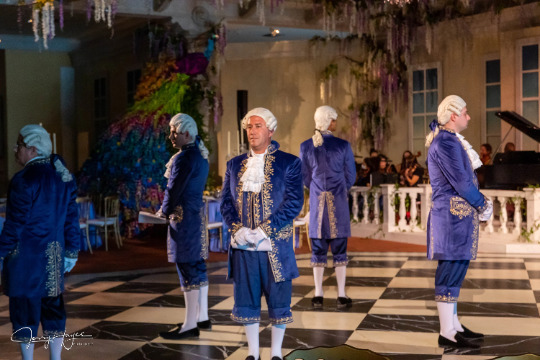
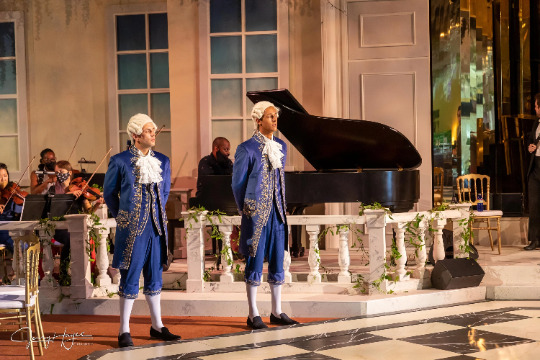

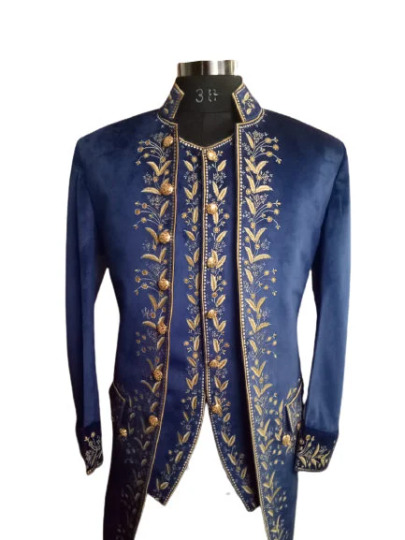
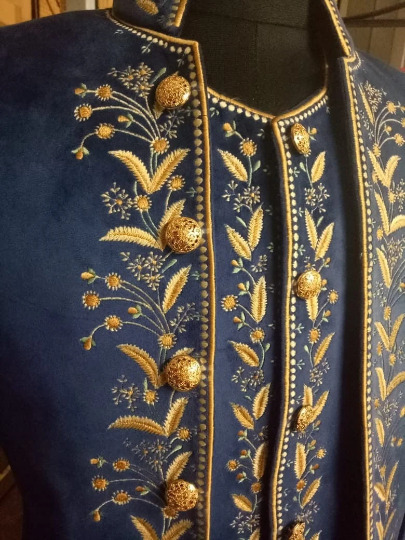
Men Blue Velvet 3Pc Colonial Suit Set Venezia Masquerade Renaissance Costume Floral Embroidery Wedding Theater Attire Free Jabot And Cuffs
Upgrade your wardrobe by adding a Velvet 3Pc Colonial Suit Set and enhance your look. This 18th Century vintage costume for men is inspired from the magical Venical Carnival & Late Baroque fashion. The costume can become the zest of any carnival or themed festival and can also be a perfect costume for wedding groom.
This 3Pc court suit include: •Blue velvet justaucorps embellished with Victorian floral embroidery & metal button detailing •Blue Velvet vest embellished with Victorian floral embroidery & have metal buttons closure •Blue velvet Breeches with floral embroidery on bottom & metal button detailings & closure •Laced Jabot And Cuffs
Features: •Intricate embroidered •Lightweight •Soft & Breathable •Comfortable wearing in all seasons
Material & Caring: •Premium Velvet & Eco friendly material •Dry Clean •Dry on low heat or hang to dry for best result
#venetian costumes#rococo fashion#men period clothing#historical costumes#reenactment clothing#victorian clothing#costumes 1700 men#rococo wedding#noble court suit#Vintage costume#wedding costume men#french court suit#fersen court suit
3 notes
·
View notes
Text
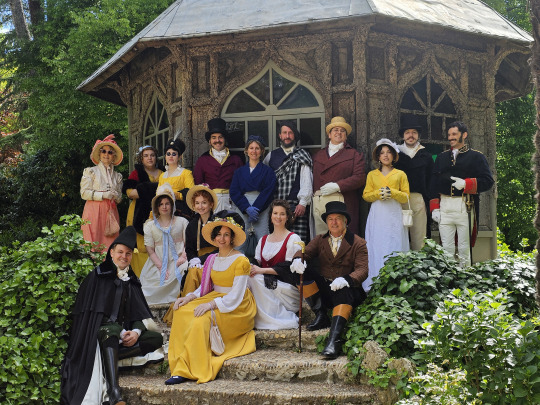
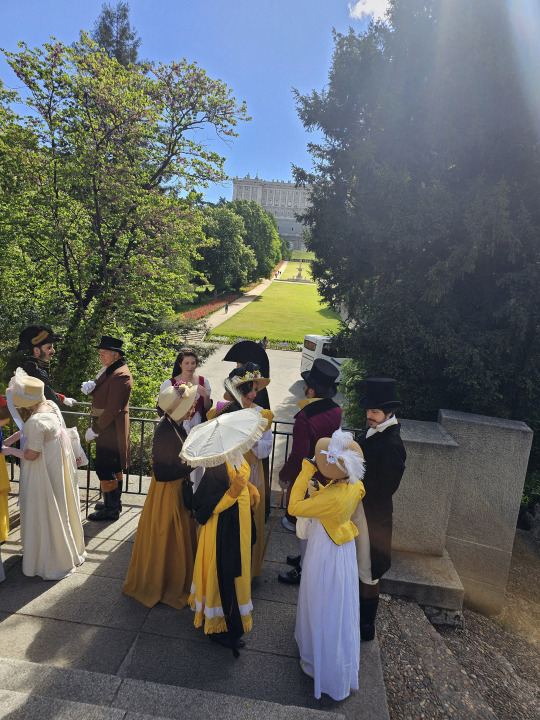
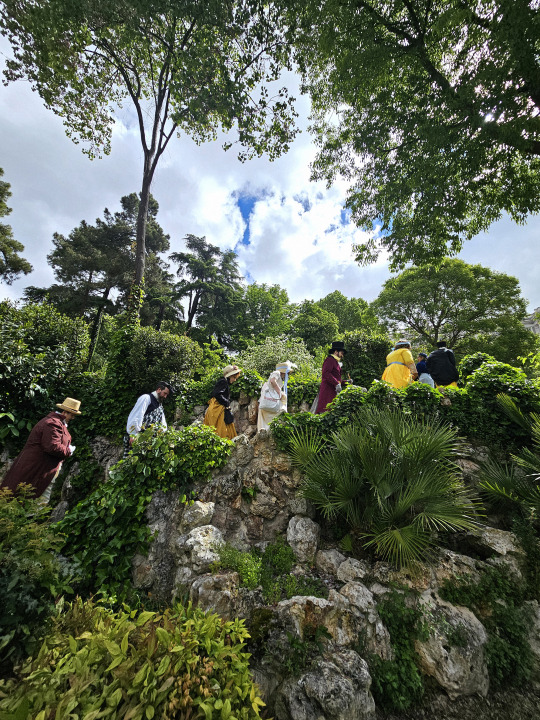

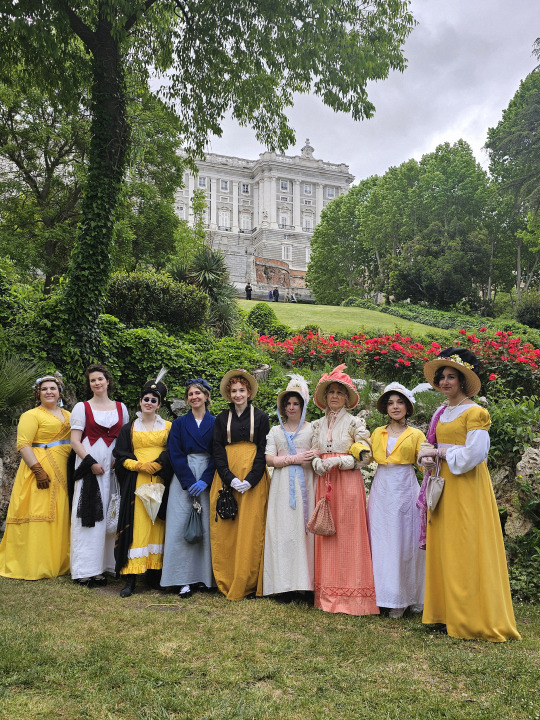
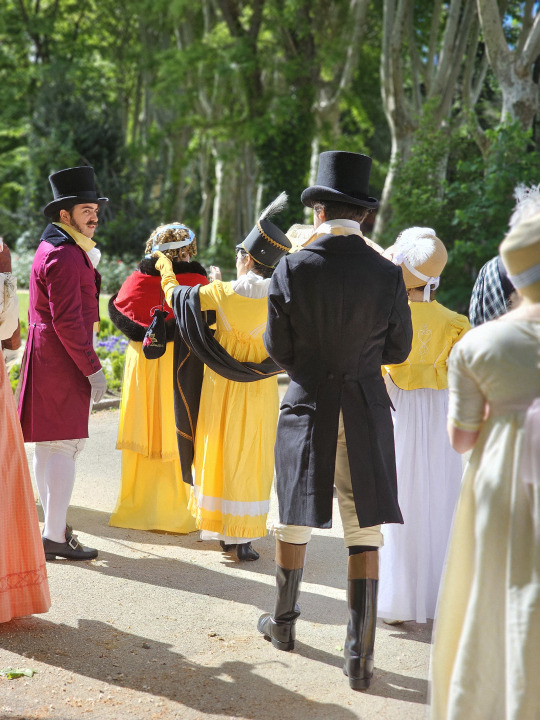
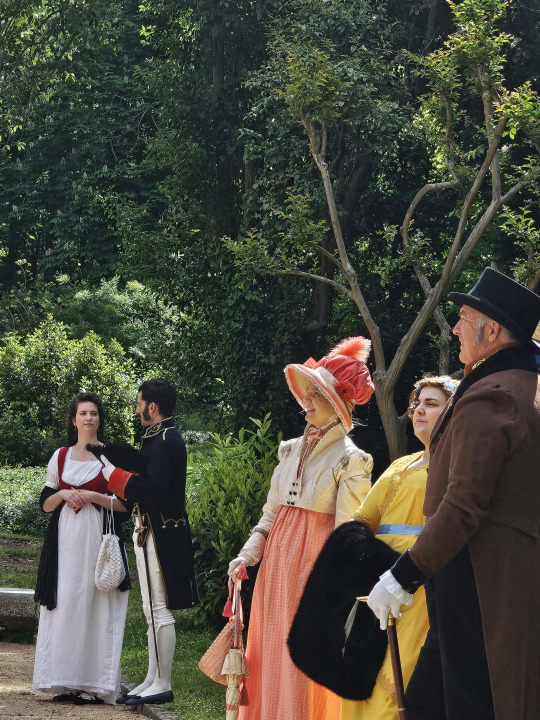
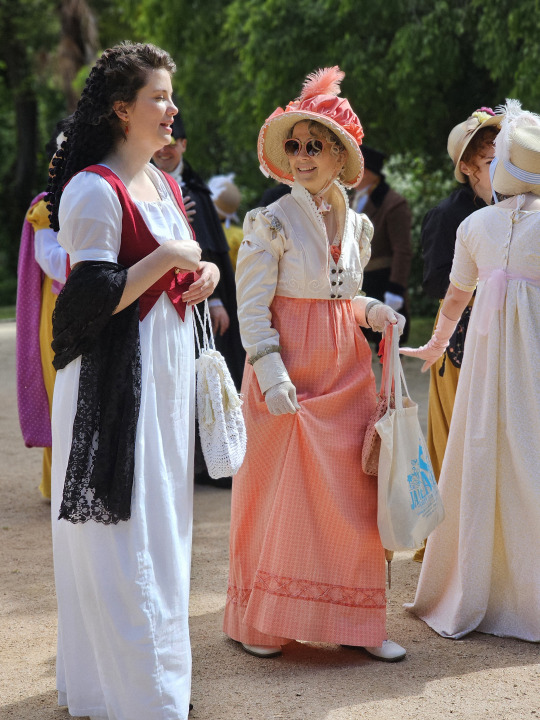
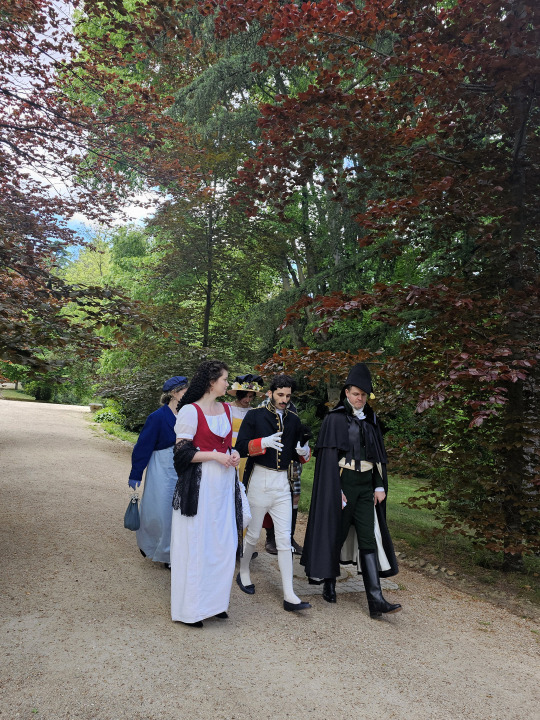
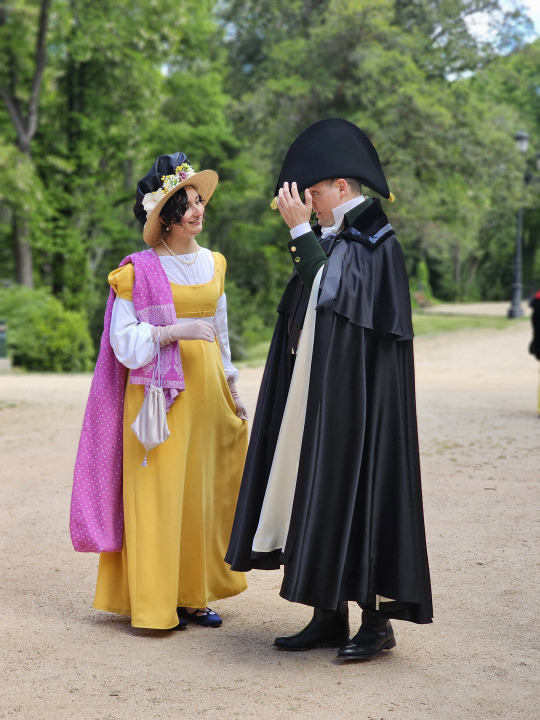

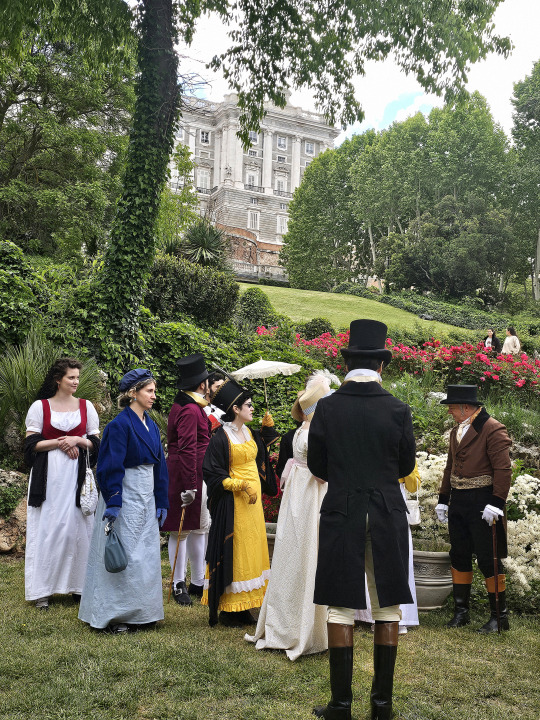
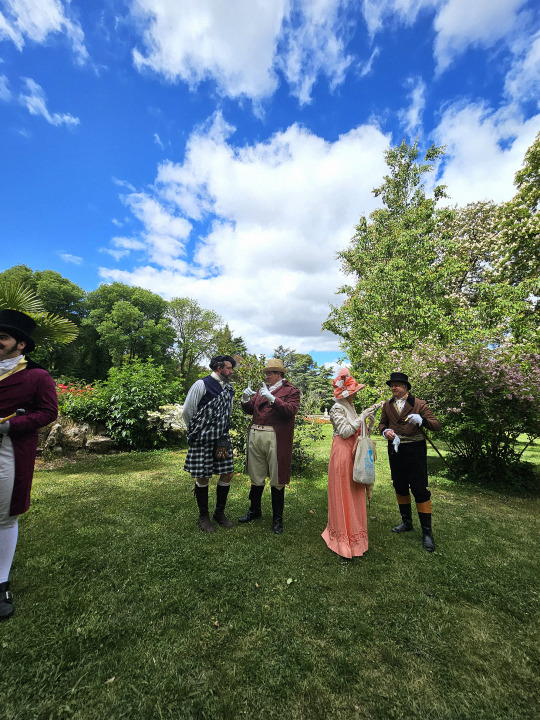
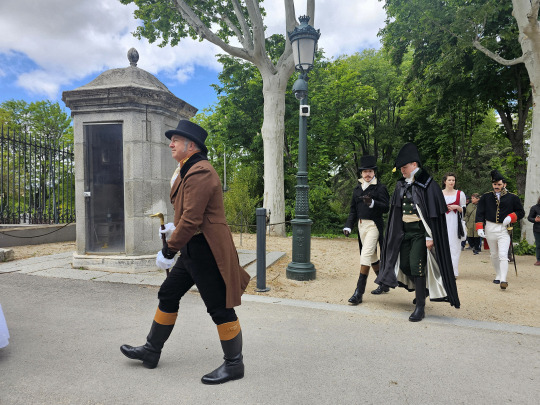

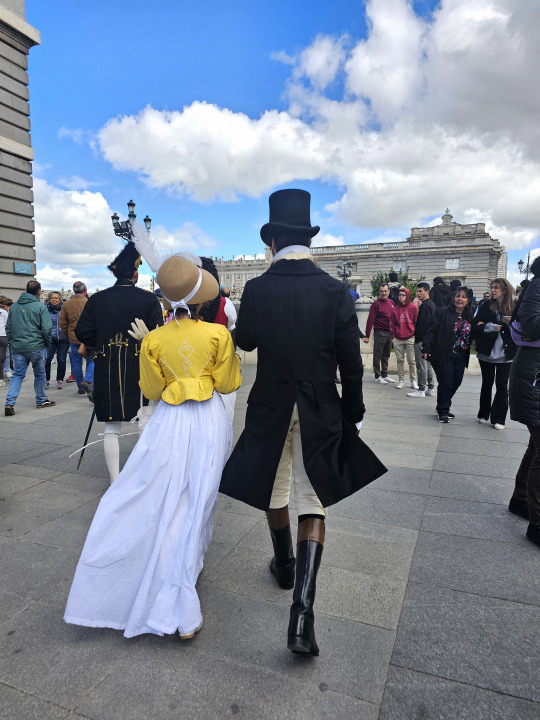
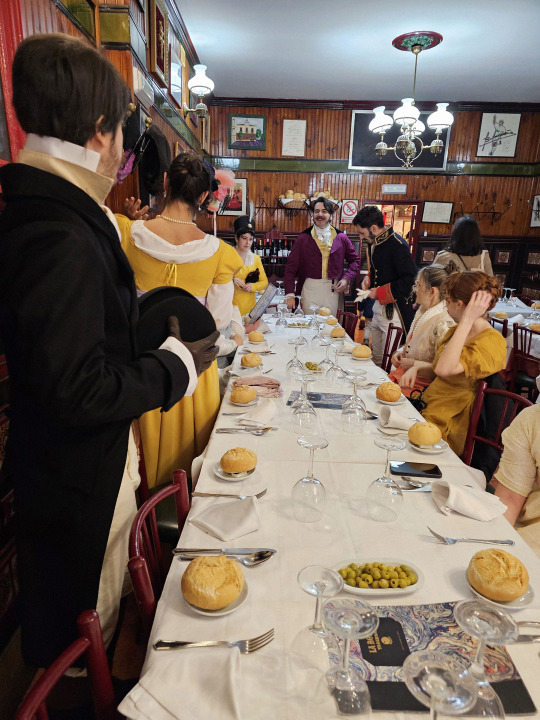
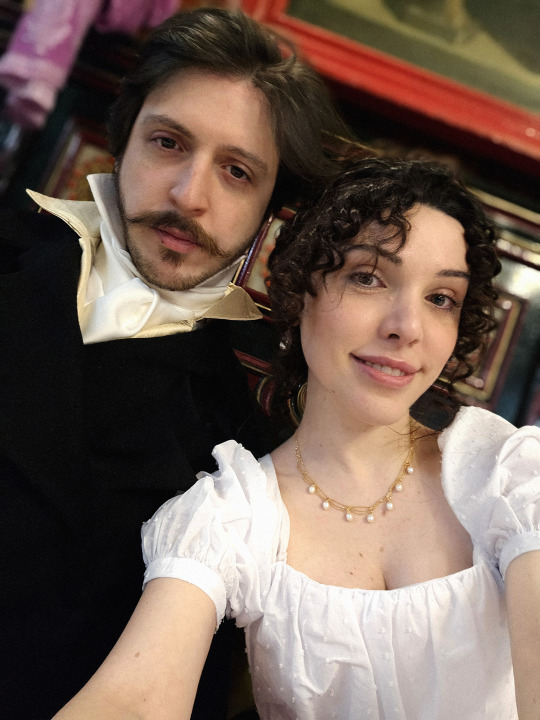
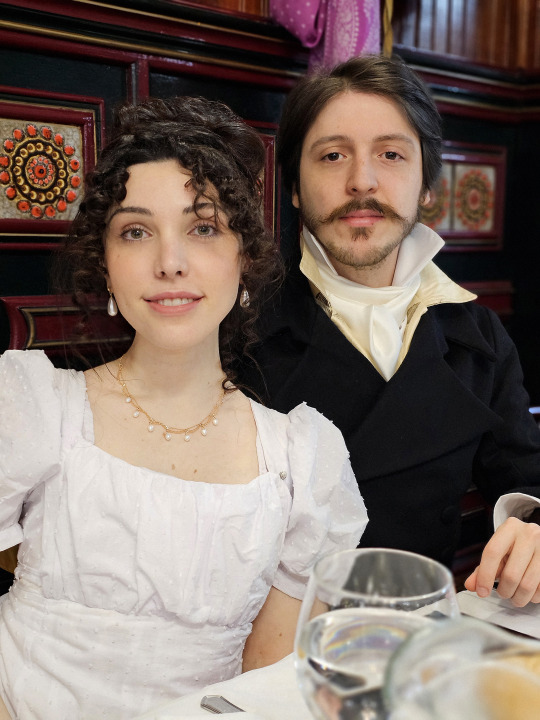
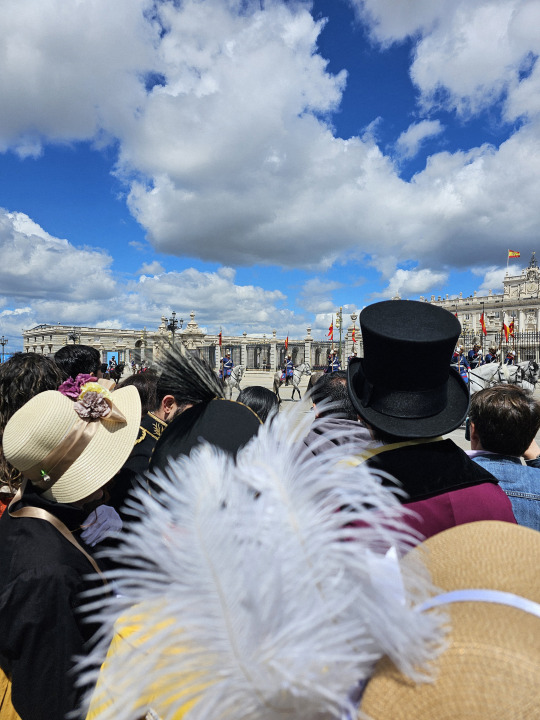
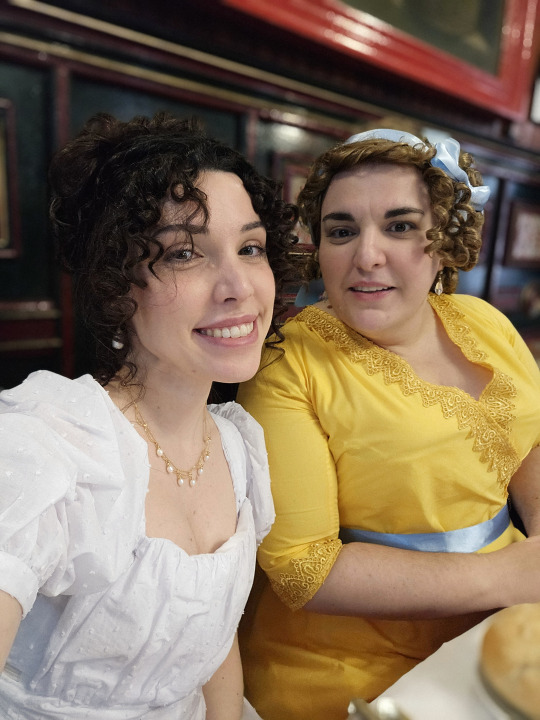
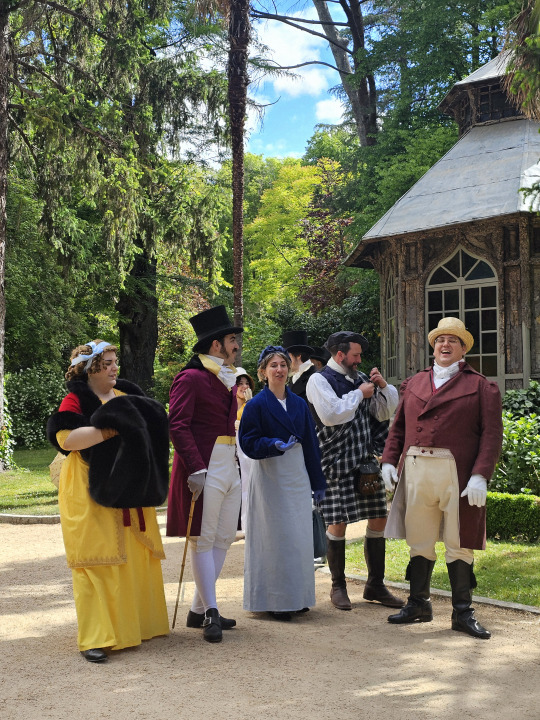
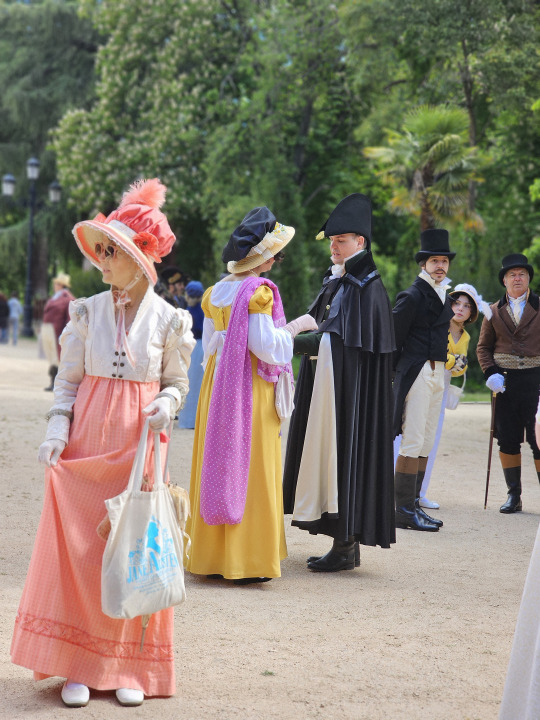


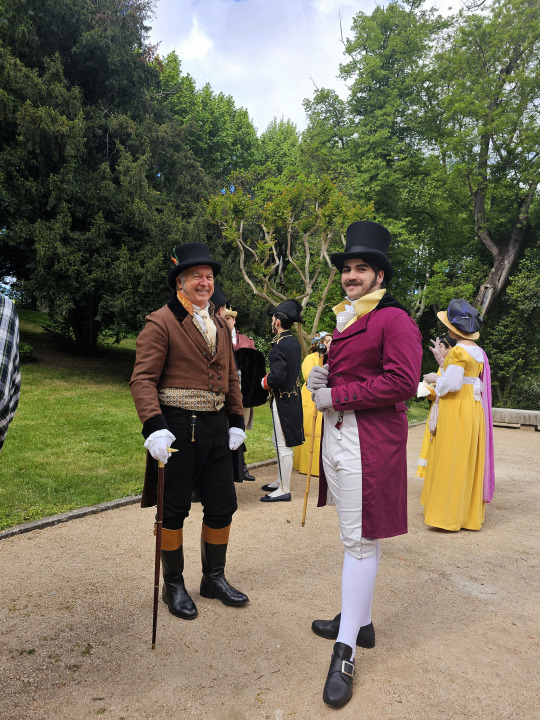
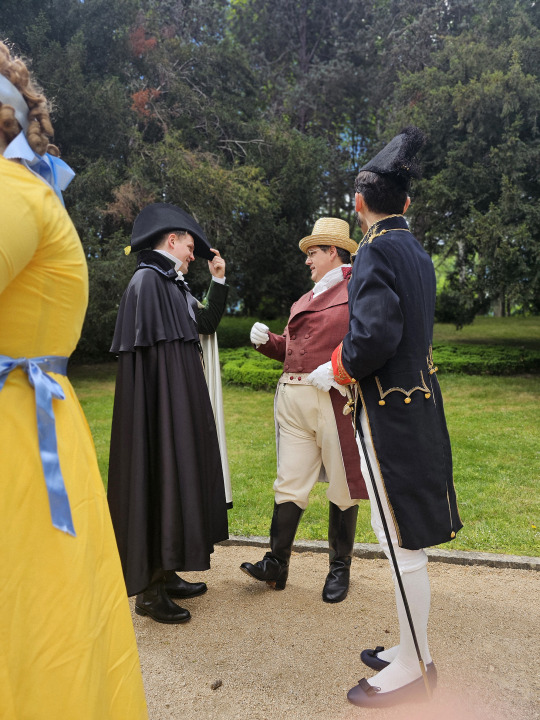


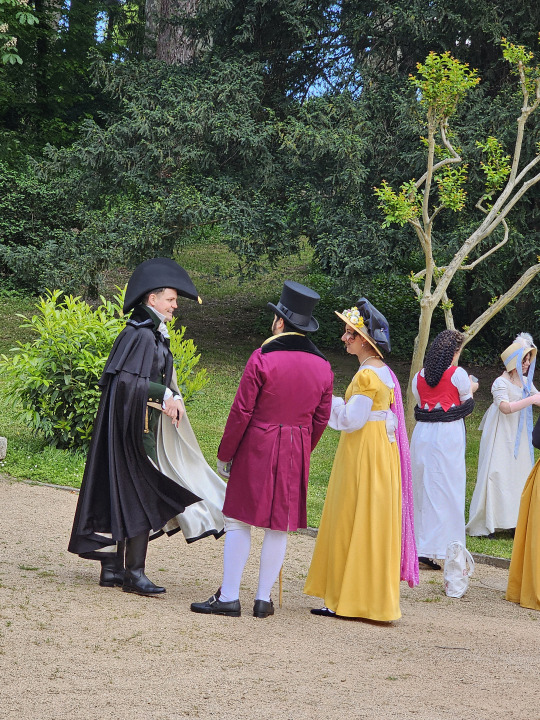
A stroll through the royal gardens and a traditional lunch in the early 1800s 😊
#nips photos#personal#regency era#napoleonic era#historical fashion#historical reenactment#on the days leading to the ball and a couple after we attended several events in regency attire!#we did not plan on going all dressed in yellow I swear it just happened lmao#regency clothes are very outside of my comfort zone in every way but everyone looks so cute in them!!#I gained some weight lately and it makes me look a bit rounder and softer which helps the look of this period tho#but I also can't make new dresses until I'm back to my normal weight or they won't fit right for long#I borrowed clothes from a friend for these events since I only own one white dress one green overdress and a bonnet for now 😩#nips blogs
248 notes
·
View notes
Text
very cool news!
I am going to work at an outreach event at the history museum next month! To showcase medieval women's clothing! And I am going to get paid for it :D
22 notes
·
View notes
Text

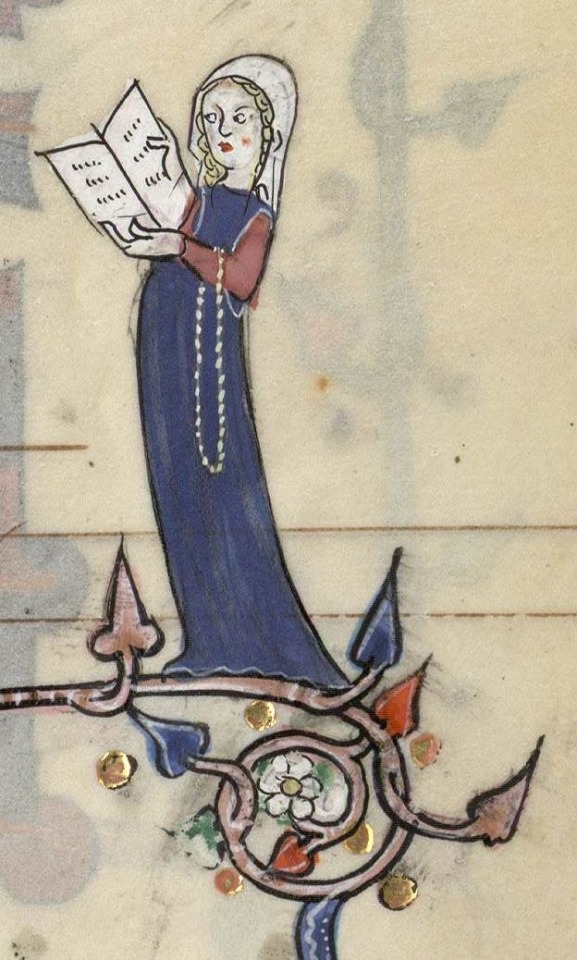
Medieval Posture ™
#medieval reenactment#medieval#14th century#14th century reenactment#reenactment#medievalcore#costuming#photography#medieval clothing#medieval manuscript#sca#innilgard#i’ll be on my merry way now
364 notes
·
View notes
Text








Having finally the chance to show our recostructive work of a woman dressed according to Roman fashion in I sec a.C. The Tunic and stola are made according to Lex Cornelia, a law that required from unmarried woman to dress without bright colours.
Photos by The Dark Shutter
#historical costume#historical fashion#historical clothing#roman empire#pompeii#roman matrona#Italy#historical reenactment
36 notes
·
View notes